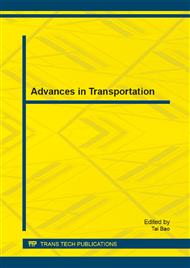p.840
p.845
p.849
p.853
p.858
p.863
p.867
p.873
p.878
The Impact of Urban Structure and Building Typology on Transport Solutions
Abstract:
During the 19th century, European cities witnessed radical reconstructions which were usually necessitated by the remarkable increase in traffic. The existing transport systems were often based more on Gothic period or even earlier. The narrow streets were no longer able to accommodate the increasing frequency of vehicles, which have been even more intensified by the development of railways. The second half of the 19th century and the period of the beginning of the World War II brought the construction of ring roads based on the layouts of former medieval walls and in big cities then more and more thoroughfares. Along these main avenues, mainly residential houses or parterre intended for services and trade were built, that nowadays form the traditional urban structure. The objects were not usually uniformed in style and in the 19th century there were mostly eclectic forms of architecture. In the early 20th century and at the turn of the century then we can meet the Art Nouveau style, Traditionalism, Cubism, Modernism and Functionalism.
Info:
Periodical:
Pages:
858-862
Citation:
Online since:
January 2014
Authors:
Price:
Сopyright:
© 2014 Trans Tech Publications Ltd. All Rights Reserved
Share:
Citation:


